Hamam al-Alil is a spa town south of Mosul about 27 KM in the Nineveh Governorate in Iraq, on the western bank of the Tigris River. It is referred to as the largest town south of the city. It is well-known with its mineral water springs that located on the side of the river and many people have been visited the town from all over Iraq to get the treatment of its water due to its various medical benefits of this water.
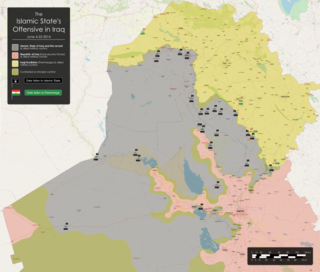
The Northern Iraq offensive began on 4 June 2014, when the Islamic State of Iraq and Levant, assisted by various insurgent groups in the region, began a major offensive from its territory in Syria into Iraq against Iraqi and Kurdish forces, following earlier clashes that had begun in December 2013 involving guerillas.
The persecution of Christians by the Islamic State involves the systematic mass murder of Christian minorities, within the regions of Iraq, Syria, Egypt and Libya controlled by the Islamic terrorist group Islamic State. Persecution of Christian minorities climaxed following the Syrian civil war and later by its spillover.
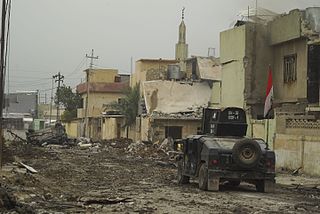
The War in Iraq (2013–2017) was an armed conflict between Iraq and its allies and the Islamic State. Following December 2013, the insurgency escalated into full-scale guerrilla warfare following clashes in the cities of Ramadi and Fallujah in parts of western Iraq, and culminated in the Islamic State offensive into Iraq in June 2014, which lead to the capture of the cities of Mosul, Tikrit and other cities in western and northern Iraq by the Islamic State. Between 4–9 June 2014, the city of Mosul was attacked and later fell; following this, Prime Minister Nuri al-Maliki called for a national state of emergency on 10 June. However, despite the security crisis, Iraq's parliament did not allow Maliki to declare a state of emergency; many legislators boycotted the session because they opposed expanding the prime minister's powers. Ali Ghaidan, a former military commander in Mosul, accused al-Maliki of being the one who issued the order to withdraw from the city of Mosul. At its height, ISIL held 56,000 square kilometers of Iraqi territory, containing 4.5 million citizens.
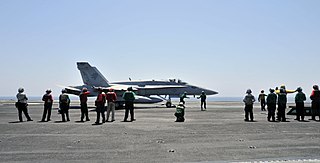
On 15 June 2014, U.S. President Barack Obama ordered United States forces to be dispatched in response to the Northern Iraq offensive of the Islamic State (IS) as part of Operation Inherent Resolve. At the invitation of the Iraqi government, American troops went to assess Iraqi forces and the threat posed by ISIL.
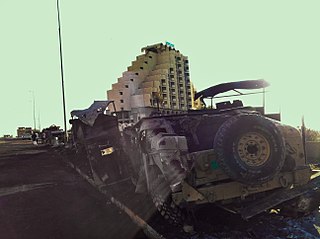
The fall of Mosul occurred between 4 and 10 June 2014, when Islamic State (IS) insurgents, initially led by Abu Abdulrahman al-Bilawi, captured Mosul from the Iraqi Army, led by Lieutenant General Mahdi Al-Gharrawi.

The Timeline of the War in Iraq covers the War in Iraq, a war which erupted that lasted in Iraq from 2013 to 2017, during the first year of armed conflict.
In early 2014, the jihadist group Islamic State of Iraq and the Levant captured extensive territory in Western Iraq in the Anbar campaign, while counter-offensives against it were mounted in Syria. Raqqa in Syria became its headquarters. The Wall Street Journal estimated that eight million people lived under its control in the two countries.
This article contains a timeline of events from January 2015 to December 2015 related to the Islamic State of Iraq and the Levant (ISIL/ISIS). This article contains information about events committed by or on behalf of the Islamic State, as well as events performed by groups who oppose them.
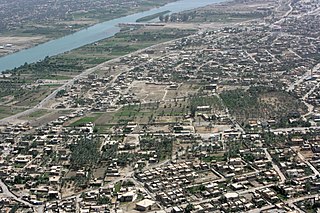
The Battle of Ramadi was a battle launched by the forces of Iraq to successfully recapture the city of Ramadi from the Islamic State of Iraq and the Levant (ISIL), which had taken the city earlier in 2015 in a previous battle. Air power was a major component of the battle, with the United States and other nations conducting over 850 airstrikes in the Ramadi area from July 2015 to late February 2016, and the US crediting airstrikes with 80% of the reason why the city was recaptured. By February 2016, Iraqi forces successfully recaptured the city after two and a half months of fighting. It was predicted that it would take several months to clear the city of the bombs ISIL left behind, with at least 9 months needed to clear the city's Tamim District. At the time, Ramadi had suffered more damage than any other city or town in Iraq.

The Shirqat offensive, codenamed Operation Conquest or Operation Fatah, was an offensive against the positions of the Islamic State of Iraq and the Levant (ISIL) in and around the district of Al-Shirqat District to reach the city of Mosul.

The Battle of Mosul was a major battle initiated by the Iraqi Government forces with allied militias, the Kurdistan Regional Government, and international forces to retake the city of Mosul from the Islamic State (ISIL), which had seized the city years prior in June of 2014. It was the largest conventional land battle since the capture of Baghdad in 2003, it was also the world's single largest military operation overall since the 2003 invasion of Iraq and was considered the toughest urban battle since World War II. The operation, which was called Operation "We Are Coming, Nineveh", began on 16 October 2016, with forces besieging ISIL-controlled areas in the Nineveh Governorate surrounding Mosul, and continued with Iraqi troops and Peshmerga fighters engaging ISIL on three fronts outside Mosul, going from village to village in the surrounding area in the largest deployment of Iraqi troops since the 2003 invasion of Iraq.
The Hamam al-Alil massacre was the killing of at least 300 civilians in the town of Hamam al-Alil in Iraq's Nineveh Governorate by the Islamic State of Iraq and the Levant (ISIL) in late October and early November 2016. The event took place within a larger ongoing assault on the city of Mosul by a wide coalition of anti-ISIL forces, which managed to capture Hamam al-Alil on 7 November.
This article lists the mass executions in ISIL-occupied Mosul. Mosul, which is located in the Nineveh Governorate of Iraq, was occupied by the Islamic State of Iraq and the Levant (ISIL) from the Fall of Mosul on June 10, 2014, until the liberation of Mosul on July 10, 2017. Mosul is the second largest city in Iraq, and because of this, it was one of the Islamic State's largest bases, and their capture of the city was used in propaganda to demonstrate their military strength. Sunni Islam is the majority religion in the area. Mass executions of civilians, enemy soldiers, and members of ISIL who were accused of offenses were a regular occurrence, and executions peaked during the Mosul offensive. Mosul was the site of many of ISIL's war crimes. This article is a timeline of recorded mass executions carried out by ISIL in and around Mosul.
This is a timeline of events during the War in Iraq of 2013 to 2017 in its final year.

Violence against LGBT people is part of the ideology of ISIL, which mandates capital punishment for homosexuality within its territory, in Iraq, Syria and Libya.
During the Battle of Mosul (2016–2017), numerous reports of human rights abuses surfaced against the various parties involved in the conflict. Up to 1.5 million civilians lived in the city, sparking concerns among various organizations of a large humanitarian crisis. Lise Grande, the United Nations' humanitarian coordinator in Iraq, stated, "In a worst-case scenario, we're literally looking at the single largest humanitarian operation in the world in 2016." Save the Children warned that massive civilian bloodshed was likely, unless safe routes were authorized to let civilians flee. The U.S. government has accused ISIL of using civilians as human shields.







